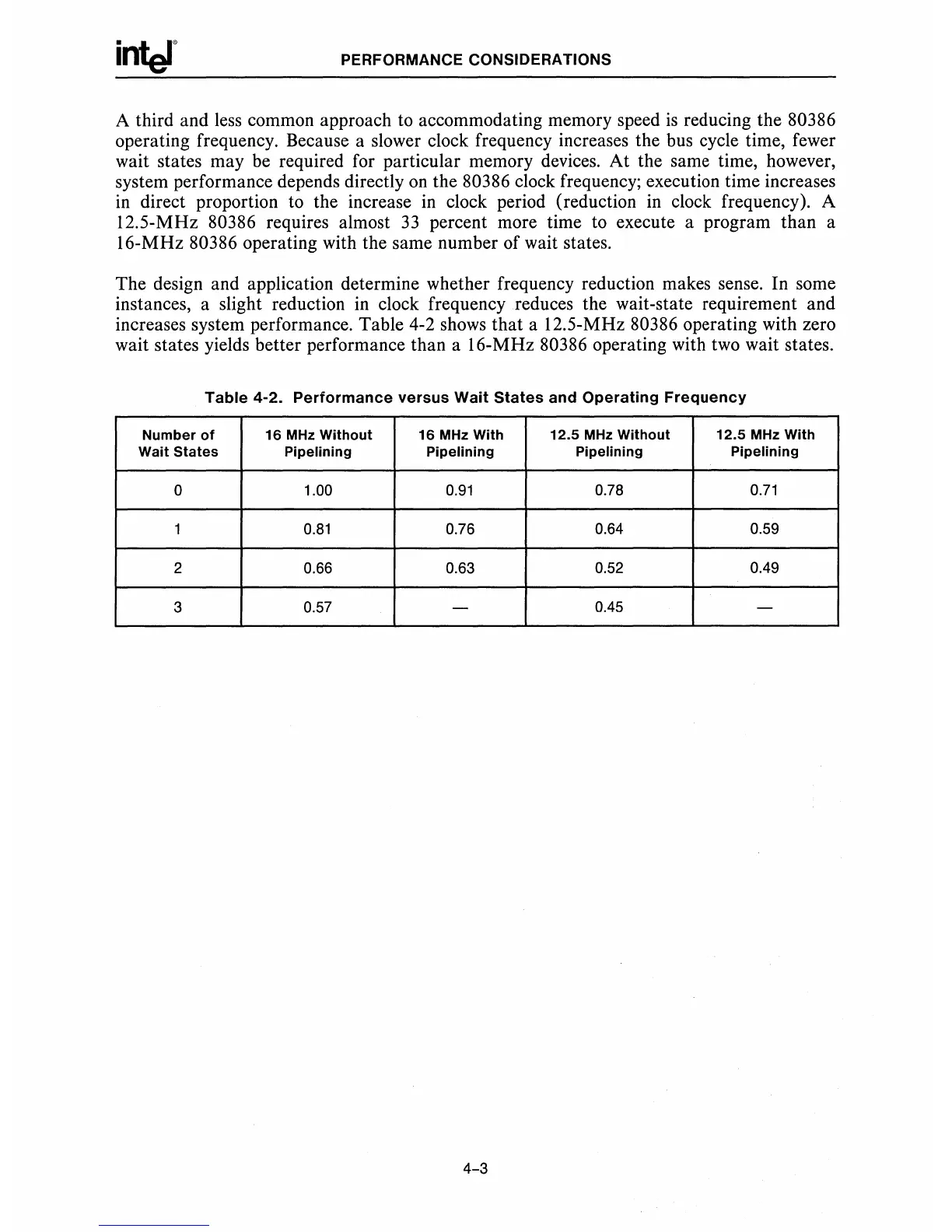PERFORMANCE CONSIDERATIONS
A third and less common approach to accommodating memory speed
is
reducing the 80386
operating frequency. Because a slower clock frequency increases the bus cycle time, fewer
wait states may be required for particular memory devices. At the same time, however,
system performance depends directly
on
the 80386 clock frequency; execution time increases
in
direct proportion to the increase
in
clock period (reduction
in
clock frequency). A
12.5-MHz
80386 requires almost
33
percent more time to execute a program than a
16-
MHz
80386 operating with the same number of wait states.
The design and application determine whether frequency reduction makes sense. In some
instances, a slight reduction
in
clock frequency reduces the wait-state requirement and
increases system performance. Table 4-2 shows
that
a 12.5-MHz 80386 operating with zero
wait states yields better performance than a 16-MHz
80386 operating with two wait states.
Table
4-2.
Performance
versus
Wait
States
and
Operating
Frequency
Number
of
16
MHz
Without
16
MHz With
12.5
MHz
Without
12.5
MHz
With
Wait
States
Pipelining
Pipelining
Pipelining
Pipelining
0 1.00
0.91
0.78
0.71
1
0.81
0.76
0.64 0.59
2
0.66
0.63 0.52 0.49
3
0.57 -
0.45 -
4-3

